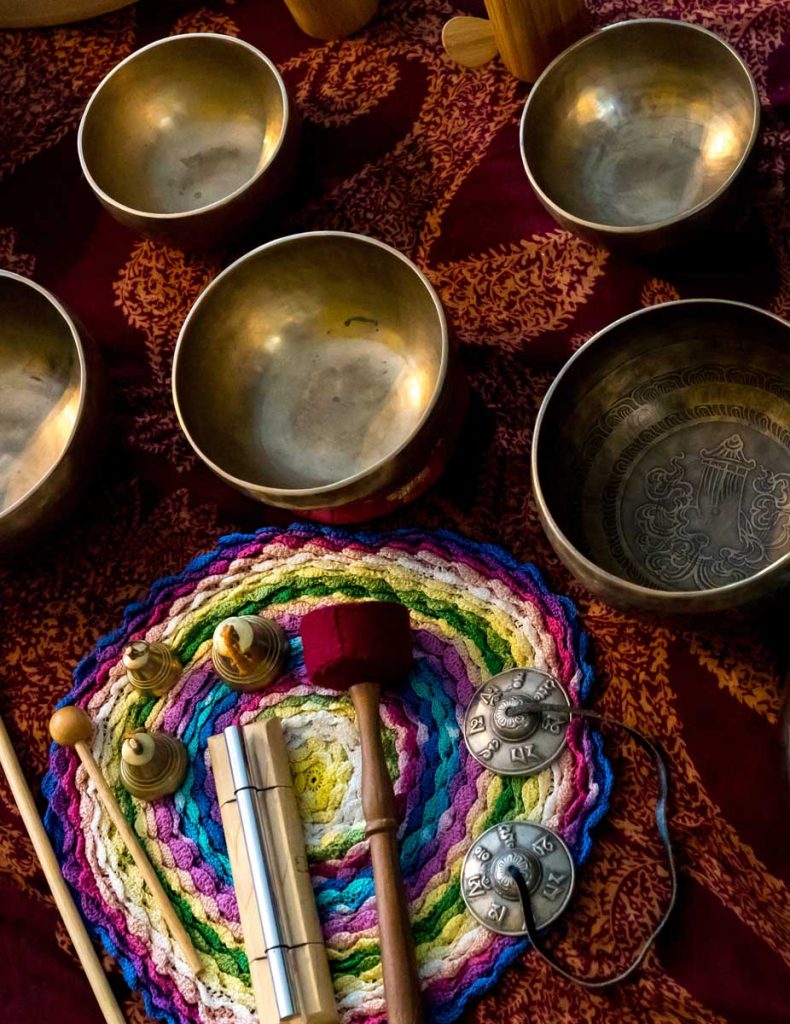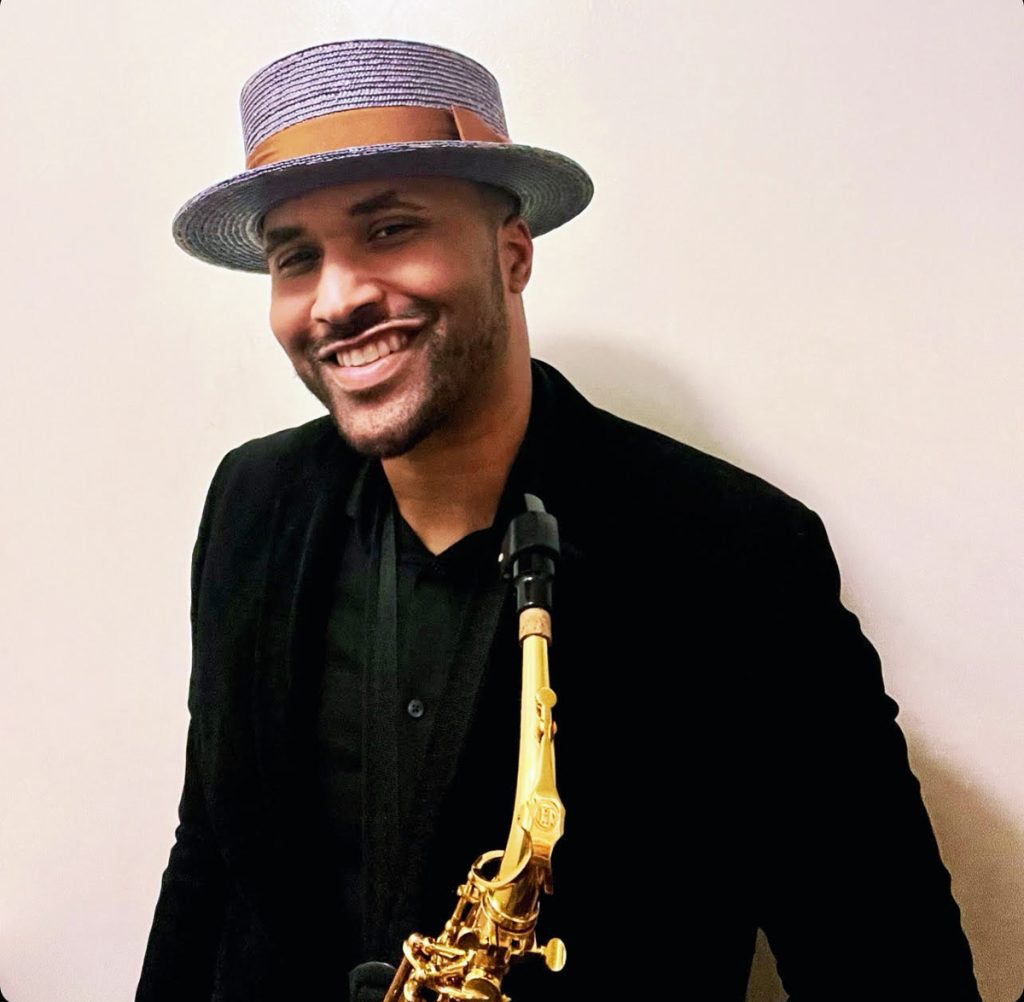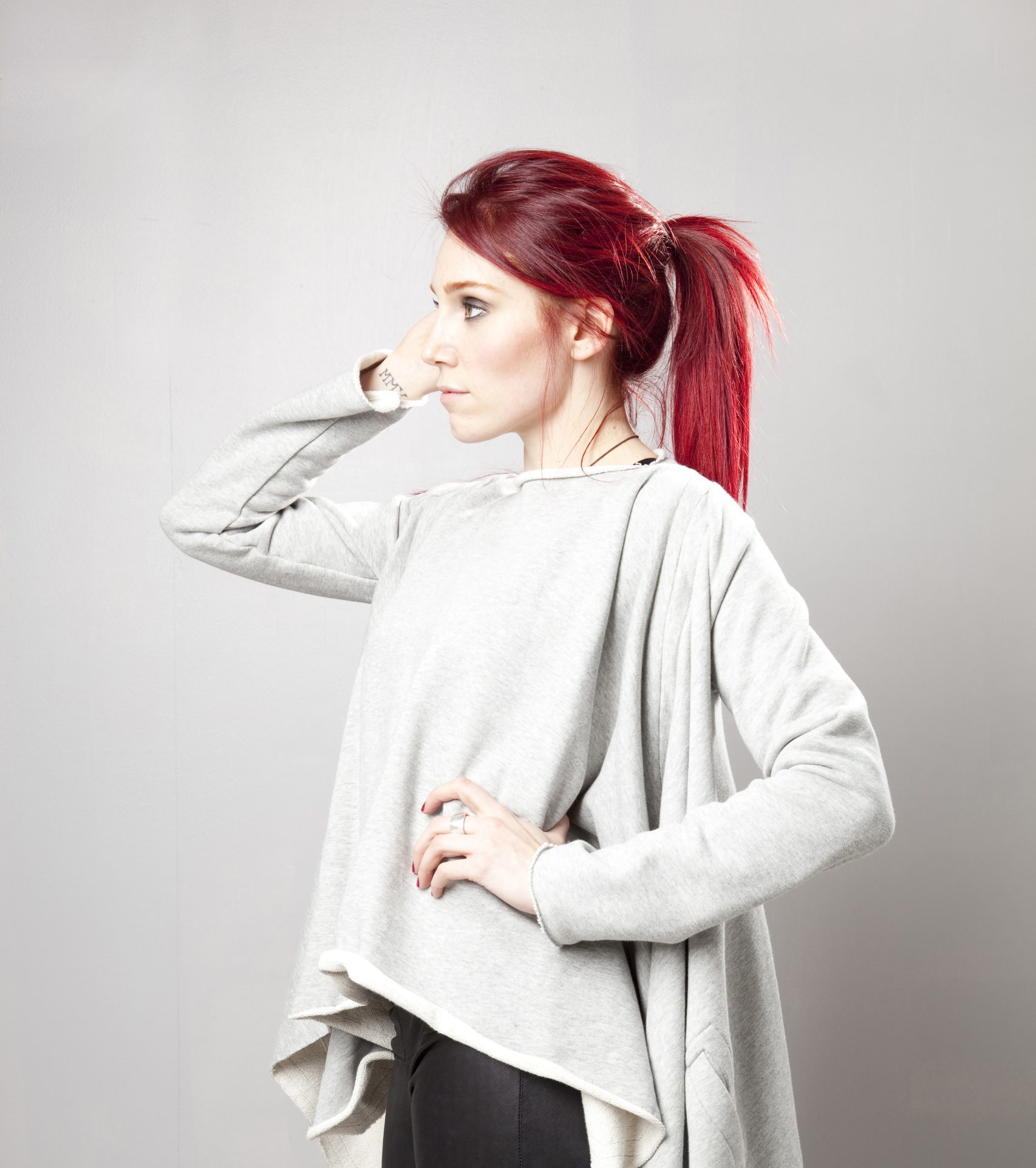Article
From Vinyl Rituals to Sound Baths: How We Listen Shapes How We Feel

We’ve all experienced that magic moment when a song hits just right. Maybe you’re rocking your favorite pair of Bluetooth headphones and cueing up the reissue from your favorite childhood band. Or perhaps you’re in the orchestra pit for a sold-out show you’ve been eagerly awaiting, linking arms with the person next to you and belting out the chorus to the encore. You could even be in the grocery store reaching for a box of cereal when your jam from high school comes on. Whether it’s live music or a recording you’ve listened to more times than you can count, music has a way of pulling us in and wrapping us in nostalgia.
The way we experience these moments has undergone significant evolution over the years. We’ve gone from dropping the needle on vinyl in our childhood bedrooms to being swept up in the energy of a concert crowd to lying still in a sound bath and taking deep breaths as soothing music echoes throughout the room. These shifts aren’t just about the technology. They reflect how we connect with music, whether it’s in a solo or group setting.

The Timeless Magic of Vinyl on Hi-Fi Systems
Those of us who were around in the 1960s have very vivid memories of going to the record store and returning home with a vinyl release we’d been anticipating for months. You’d plop down on the floor in your living room and cozy up to spend 20 minutes listening to Side A before flipping the record over to continue the journey with Side B. “The big difference back then was the accessibility of the product, so you only had a finite number of records, and today with the internet, everybody’s got everything,” says Dr. Susan Rogers, a professor at Berklee College of Music and author of This Is What It Sounds Like.
Listening to music back then was a more deliberate act, one that demanded our full attention. It’s something that music enthusiast Mariana Montes Mendoza, a full-time traveler and writer with Vibe Adventures, still chases to this day. “There’s something magical about making a ritual out of placing a record on the turntable, dropping the needle, and hearing those first warm crackles,” she says. David S. Woolworth, an acoustics expert and principal at Roland, Woolworth & Associates, LLC, agrees, noting, “There is a ritual of putting on a record.”
You’d pull a record from its sleeve, place it onto a record player, and savor the warm crackle before the music began. That intentionality turned listening into something sacred —a tangible connection to the music that streaming can’t quite replicate. “And back then it was more of an active listening experience,” adds Rogers. “Listening to music was something you were doing, whereas as soon as the Walkman came along, music became so much more portable, and music could become a secondary activity.”
Vinyl’s history dates back to 1948, when Columbia Records introduced the 33⅓ RPM long-playing record, enabling entire albums to be stored on a single disc and revolutionizing music consumption. By the 1970s, vinyl and Hi-Fi systems were the gold standard, bringing studio-quality sound into homes. Vinyl was a massive part of the childhood of Justin Goldsberry, a professional musician and CEO of Goldsberry Management Group, LLC. He spent his days in the back of his family’s North Carolina convenience store playing records. “The sound was, and still is, like liquid gold,” he recalls.
This ritual of carefully placing a needle atop a record, says Rogers, deepened our emotional engagement: “It allows you to anticipate what you’re going to experience.” A professional musician, Tim Rockmore remembers how vinyl encouraged a full-album experience: “You’d focus your attention on playing each side from start to finish,” he says. However, in the 1980s and 1990s, convenience began to surpass intention as cassette tapes and CDs emerged. Yet, there is something about that nostalgic sound that is calling us today, as vinyl is staging a major comeback – global sales reached 43 million units in 2023, according to the Recording Industry Association of America (RIAA). For enthusiasts like Bart Good, a vinyl enthusiast and former Sweetwater music salesman from Sacramento, CA, vinyl’s organic quality remains unmatched. “There is this sort of smooth organic quality with more depth and width to the soundstage,” he shares.


The Pulse of Concerts, Clubs, and Raves
Listening to vinyl at home is one thing, but for many music enthusiasts, there is nothing more holy than standing in a packed concert venue anticipating your favorite band to emerge. The lights dim, the crowd roars, and the opening notes command cheers from everyone in the venue. This is music at its most communal, a shared ritual that vinyl can’t replicate. Good still remembers experiencing this at his first big concert, seeing Depeche Mode in Sacramento. “The energy and excitement from the crowd were palpable,” he says. And Montes Mendoza had a similar awakening at her own Depeche Mode show: “Nothing compares to being in the company of people sharing a moment of musical bliss as the bass penetrates every inch of your body.”
Dating back to early humans, music has always been a social glue. “Music originated as a collaborative activity that facilitated social bonding,” says Rogers. She notes that rhythms around 100 beats per minute – like those in many pop anthems – sync our bodies and minds and unite a crowd. Jonathan Berger, a music professor at Stanford University, ties this to science. “There is a large body of research on entrainment to music and rhythm,” he says. “At a concert or rave, we’re not just listening; we’re moving together, feeling part of something bigger.”
At clubs and EDM shows, DJs mix music that pulses through the night, eliciting crowds of thousands to dance, which truly supports this ideology. The rise of electronic dance music in the late 1980s, spurred by events like the Second Summer of Love in the UK, transformed raves into cultural phenomena where sound and community collided. But what makes or breaks that experience is the quality of the sound.
“A poor mix will have much less impact than a good mix,” says Woolworth. “The quality of the system comes into play, and then you have an interaction of your loudspeakers with your acoustical environment.” In large venues, he emphasizes that factors such as distance and noise can compromise sound quality, making the acoustical environment a crucial factor in the overall experience. The right acoustics can truly elevate a shared musical experience.
A New Age of Collective Listening: The Rise of Wellness Sessions
Today, collective listening is evolving beyond performance into experiences where sound itself takes center stage. Enter wellness sessions, such as sound baths and DJ-led yoga classes, where ambient tones and vibrations serve as the perfect accompaniment to a shared sensory experience. Melissa S. Chiou, a Los Angeles-based marketing professional with an affinity for wellness events, describes her sound bath experience as “healing and soothing,” noting, “There’s something about the vibrations that has an effect on the body.”
Co-founder of NativePath, Chad Walding, has seen measurable benefits: “I have done sound baths at wellness retreats and personal retreats, and I have tracked the effects on my resting heart rate and heart rate variability,” he says. He has noticed that following a session where he has been able to zone out to some ambient tones, his metrics have shown a 12-15% improvement, even the next day. “Gongs and crystal bowls are no doubt soothing, but they create vibrations and sound frequencies and have been shown to impact how well the body manages tension,” he says. He’s been so motivated by this that he incorporates the use of sound into his evening routine, playing ambient hi-fi audio at a very low volume as he winds down before bed.
These sessions, says Rogers, aren’t about melody; they’re about feeling. And in wellness settings, less structured sounds, she adds, tend to work best. “The more musical the stimulus is, sometimes the harder it is to meditate, because it draws your attention to itself,” explains Rogers. Ambient soundscapes, however, allow for reflection, creating a space where personal calm and communal connection coexist. With wellness taking center stage in recent years, sound baths are gaining traction, and these practices are now part of the $4.4 trillion global wellness industry.
Jennifer Brody, author of A Sacrifice of Blood and Stars, and a music lover in Joshua Tree, CA, has done her share of sound baths – and she’s completely hooked. “I love listening to records and going to live shows, but there’s something extra cool about the musical aspect of a sound bath and how it just calms everything down and really feels healing,” she says. “You’re in a room with other people and your eyes are closed, but you also feel a collective bonding and sense of calm that those ambient notes transcend upon the whole group.”

Sound Quality: The Heart of Every Experience
Whether we’re unwinding with a record, dancing in a crowd, or lying in a sound bath, the quality of sound shapes how deeply we connect, says Woolworth. “Sound quality is very important, especially if you’re trying to actively listen,” he says. “And if something’s wrong or off or poor about the sound, then even in passive listening, it can affect the emotional depth and memorability.” For vinyl lovers, it’s about the gear. Good stresses, “It does come down to the quality of your equipment.”
As a professional musician, Rockmore agrees, noting that he insists on a high-end setup for his vinyl recordings. “Mastering for vinyl is critical. When done right, vinyl records can sound amazing,” he says. He added that it’s important to have a good, calibrated turntable with a high-quality tone arm and stylus and a good, high-end stereo. “Speakers are as important or more important because they physically push the air and create the sound you’re hearing in the room,” says Rockmore.
In live settings, the stakes can be even higher. “It’s especially important in a concert atmosphere to provide a consistent experience, from listening at home to the live experience,” says Chiou. Berger agrees, noting, “The acoustics of the space is of great importance,” though he adds that modern habits—listening through earbuds—have dulled our sensitivity to a venue’s acoustics. Rogers has observed that some of her students prefer compressed audio because it’s familiar. “Listeners do prefer clean over distorted, but we tend to prefer what we’re used to,” she says. There is also a psychoacoustic layer, with Woolworth pointing out that “we don’t listen with our ears entirely – 70% of what we’re hearing is not acoustic,” adding that we use the context of memory and visual stimuli alongside what our ears are hearing to shape our perception.
And listening to vinyl through headphones, adds Woolworth, creates an even more magical moment, as it makes the experience ultra-private. “When you put headphones on or earbuds in, you’re cutting out external sounds,” he says. “And now the acoustical image is inside your head,” Woolworth explains that headphones also keep us in the “sweet spot,” no matter where we move. “You have a lot more clarity and depth,” he says. As a sound consultant, Julian Treasure echoes this: “It’s a private experience that has its own resonance.” Rockmore found this while mixing his album. “You can really hear the stereo space and 3D image when you’re listening on good headphones,” he says. “You can hear the vocals flow and swirl above your head. It’s euphoric.” When he mixes his own music, he does so with the listener’s experience in mind and does it in a way that will make it sound best if they listen through headphones.
“Listening to ultra Hi-Fi audio files on a high-res player with high-res headphones, you can hear tiny nuances that you wouldn’t notice otherwise that are embedded deep in the background of the recording,” adds Rockmore, illustrating the almighty power of superior sound. “For example, listening to the remastered Pink Floyd album, The Dark Side of the Moon, you can actually hear people talking in the background in the recording room. That’s a treat!”
So, how do we deepen our connection to music in this ever-shifting landscape? “By consciously engaging with the music,” says Woolworth. “It’s really a focus thing.” Rogers agrees and challenges people to tap into how music makes them feel. “Listen deeply and listen for those features that you love the best, and ask yourself, why this record and not that record? Why do I seem to love this so much? The answers will tell you what you crave in music,” she says.
Whether we’re alone with a record, streaming in our cars, or dancing in a crowd at a rave, removing distractions – aka putting down our phones – allows us to truly hear. From the peaceful rituals of vinyl to the shared pulse of a concert or healing hum of a sound bath, how we listen has evolved with us. Headphones give us the private ability to immerse ourselves in a song’s every nuance. But there’s something irreplaceable about those moments when we’re listening to music while surrounded by others, singing, swaying, or breathing intently alongside each other. And the glue that holds it together? Audio quality – ensuring that, whether we’re alone or together, the sound moves us as deeply as the music itself.
More from L-Acoustics
Technologies, solutions, news, and stories related to this article.


